Jeekinz
Washing Up
As I said in another thread, I wanted to experiment with the reverse sear method. So I picked up some thick ribeyes and gave it a shot.
Ribeye steak with mixed new potatoes and a salad
Here's the raw meat ready for a 250F oven until it reaches 100F internal temp. I went slightly over because I was outside picking herbs. lol
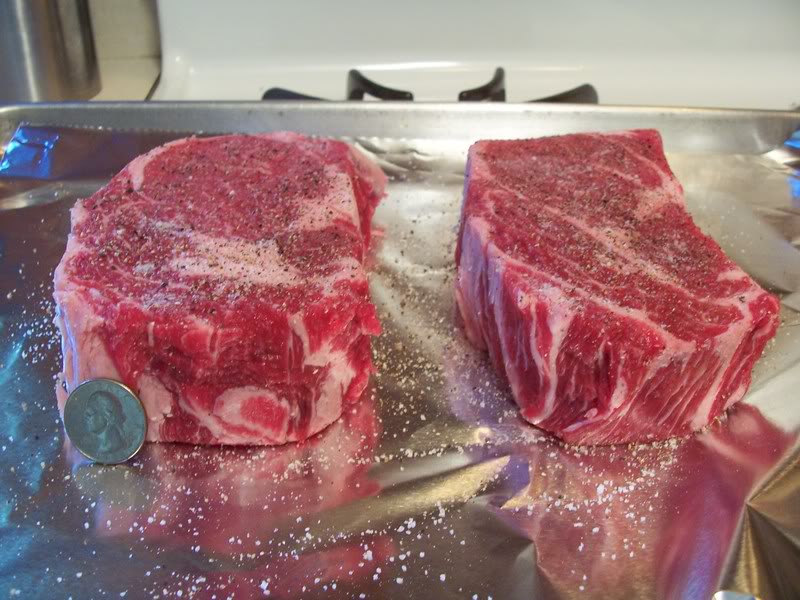
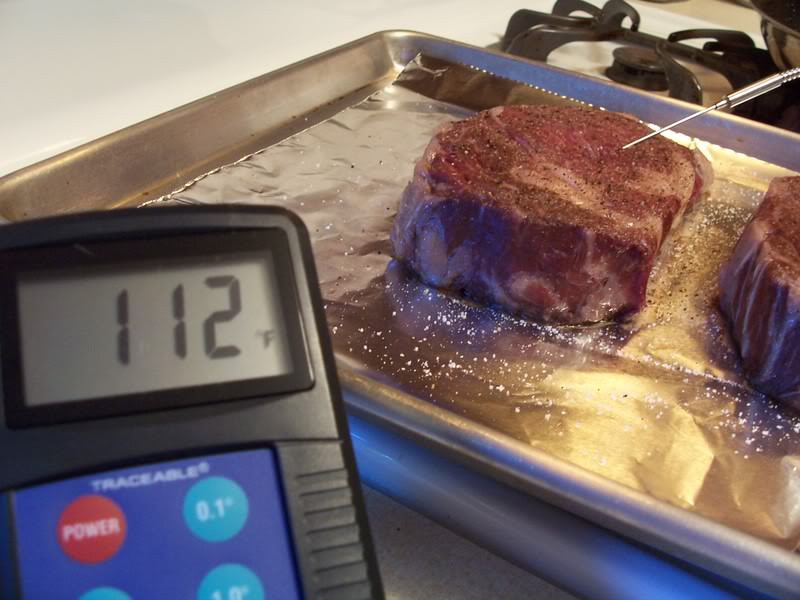
My potatoes with oil, butter, salt, pepper, thyme and rosemary.
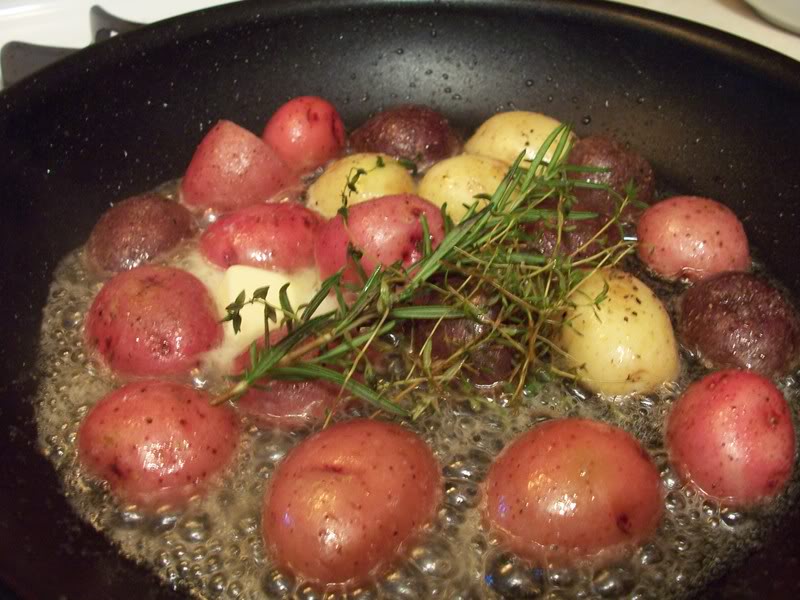
The steaks get seared in a ultra hot pan. I basted with oil/butter and fresh thyme. That's my most favorite spoon. It the size of a serving spoon but real short. Perfect for pan roasting. (Don't touch my spoon! )
)
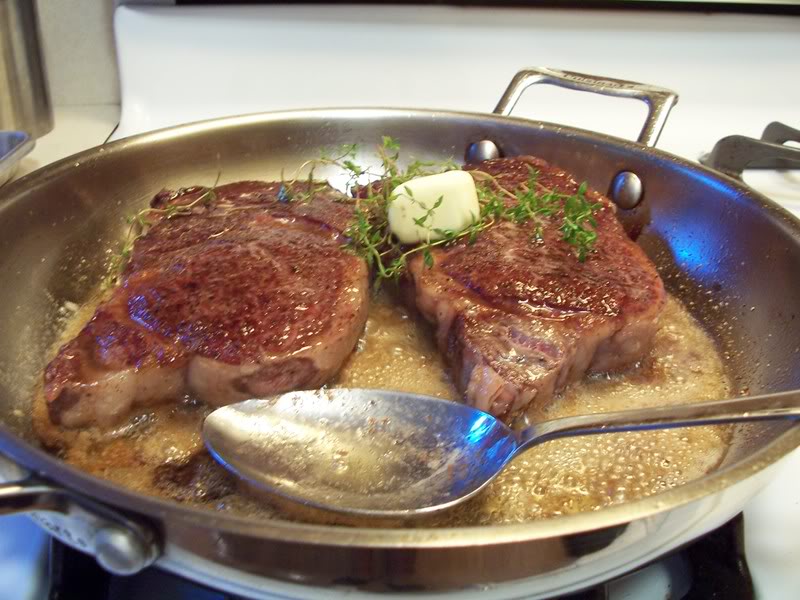
The finished dish. This steak was perfectly cooked med/rare more toward the center, and as tender as can be.
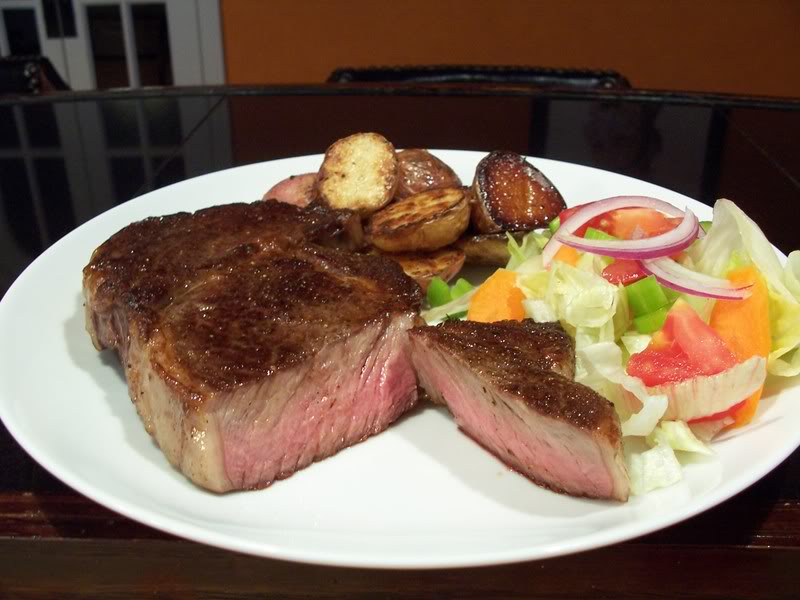
I wouldn't cook meat that method regularly, but it's a good option once in a while. It was a little bit of a hassle using the oven and keeping track of the temps. If you have the time, the final result was good though.
Ribeye steak with mixed new potatoes and a salad
Here's the raw meat ready for a 250F oven until it reaches 100F internal temp. I went slightly over because I was outside picking herbs. lol


My potatoes with oil, butter, salt, pepper, thyme and rosemary.

The steaks get seared in a ultra hot pan. I basted with oil/butter and fresh thyme. That's my most favorite spoon. It the size of a serving spoon but real short. Perfect for pan roasting. (Don't touch my spoon!
 )
)
The finished dish. This steak was perfectly cooked med/rare more toward the center, and as tender as can be.

I wouldn't cook meat that method regularly, but it's a good option once in a while. It was a little bit of a hassle using the oven and keeping track of the temps. If you have the time, the final result was good though.



